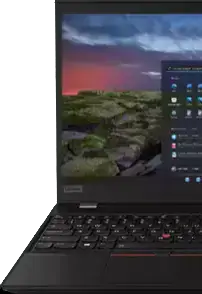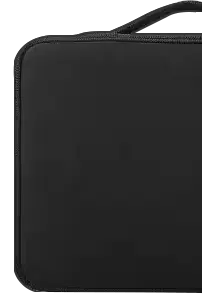What is a bootable disk?
A bootable disk is a storage device that contains all the necessary files to start up an operating system (OS) on a computer. When you boot your computer, the basic input output system (BIOS) or unified extensible firmware interface (UEFI) firmware looks for a system on all storage devices, and a bootable disk has the special structure and files that the computer needs to load the OS. You could think of it as the key that starts the engine of your computer.
What makes a disk bootable?
For a disk to be bootable, it needs to have a boot sector, which is a specific area on the disk containing machine code to be executed by the computer's control processing unit (CPU). Alongside the boot sector, the disk must have the necessary files for an operating system to start. If these requirements are met, when you power on your computer, the firmware can hand over control to the bootable disk to initiate the startup process.
How can I make a universal serial bus (USB) drive bootable?
To make a USB drive bootable, you'll typically use a utility to copy system files and a boot sector onto the USB drive. First, you'll need to have an ISO file or equivalent of the operating system you wish to install. Then, using software like Rufus or a command-line tool like 'dd' on Linux®, you can write these files onto your USB stick. This process formats the USB and installs the files necessary for booting.
What do I need to create a bootable disk?
To create a bootable disk, you'll need a few things: a storage device (like a universal serial bus (USB) flash drive or DVD), a bootable image file of the operating system (commonly in ISO format), and software to write this image onto the device. Additionally, you'll need a functioning computer to perform this task and prepare the bootable media.
Could a hard drive be made bootable?
Yes, a hard drive can be made bootable. You can either clone an existing operating system onto the hard drive or use installation media to install a new one. This process involves partitioning the hard drive, creating a boot sector, and then copying over the operating system files. Once completed, the BIOS or UEFI can boot from the hard drive.
Can I have multiple bootable partitions on a single drive?
Yes, you can have multiple bootable partitions on a single drive, which is commonly referred to as a multi-boot or dual-boot setup. Each partition can have a different operating system or a separate version of the same OS. When the computer starts, a boot manager, like grand unified bootloader (GRUB), will allow you to select which partition to boot from.
Does having a bootable backup drive help in data recovery?
Having a bootable backup drive is a lifesaver for data recovery. If your main system drive fails, you can boot from the backup drive, which has a clone of your system. This allows you to bypass the faulty drive and access a recent copy of your data. You can also use the bootable backup to restore your main drive's system files to a previous state or to a new drive entirely.
What's the difference between a live disk and a bootable disk?
A live disk is a type of bootable disk that allows you to run an operating system directly from the disk without installing it on the computer's hard drive. It's useful for trying out an OS, troubleshooting, or system repairs. A bootable disk, however, is often used for installing the OS onto the computer's hard drive. So, while all live disks are bootable, not all bootable disks are live disks.
How can I tell if my disk is bootable?
You can tell if your disk is bootable by attempting to boot from it. Restart your computer and enter the boot menu or the BIOS/ unified extensible firmware interface (UEFI) settings. Choose the disk as the primary boot device. If it's bootable, your computer will start the boot process using the files on the disk. If it's not, the system will fail to start and usually display an error message.
Can bootable disks become corrupted?
Bootable disks can become corrupted just like any other storage media. If the boot sector is damaged or if key system files are missing or broken, the disk won't be able to initiate the OS startup process. Corruptions can occur due to physical damage, software errors, or virus attacks. Regularly checking the disk for errors and keeping backups can mitigate the risk of corruption.
Why would I need a bootable disk if my computer is working fine?
Even if your computer is working fine, a bootable disk can be essential for emergency situations. It can act as a failsafe if your system becomes unbootable due to a virus, system file corruption, or hardware failure. You can use it to troubleshoot issues, recover data, or reinstall the operating system without needing a functioning OS on the computer.
Can I update the operating system on a bootable disk?
Yes, you can update the operating system on a bootable disk, especially if it's a live disk or a full OS installation on a universal serial bus (USB) drive. You can boot into the OS from the disk and run updates as you would on a normal system. However, if the bootable disk is strictly for installation purposes, you'd need to recreate the disk with the updated version of the OS.
How does a computer know where to find the bootable disk?
When a computer starts up, it performs a power-on self-test (POST) and then the BIOS or unified extensible firmware interface (UEFI) firmware searches for bootable devices connected to the computer. It checks devices according to boot order, which you can set in the BIOS/UEFI settings. When it finds a disk with a valid boot sector, it hands over control to the boot loader on that disk to continue the boot process.
Can I boot from a network instead of a disk?
You can boot from a network through a process called network booting or preboot eXecution environment (PXE) booting. This method retrieves boot files from a server on the network rather than a local disk. It's a common practice in enterprise environments where multiple systems boot the same image for consistency and ease of management.
What is the difference between UEFI and BIOS regarding bootable disks?
Unified extensible firmware interface (UEFI) and BIOS are two types of firmware interfaces for computers. UEFI is the modern replacement for the older BIOS. UEFI supports larger hard drives, has more security features, faster boot times, and an interface with advanced options. Regarding bootable disks, UEFI requires a disk to have an EFI system partition to boot, while BIOS uses a master boot record (MBR). UEFI also supports Secure Boot, which can restrict booting to only signed bootloaders.






